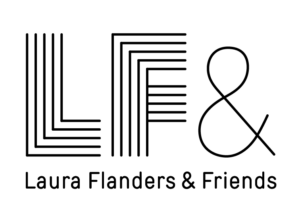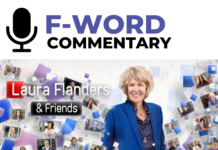If Black Lives Matter, how are journalists and media organizations considering Black pain in their coverage? And how are journalists and editors across the full spectrum of our media thinking about this? This week, we’re introducing some new colleagues, Sara Lomax-Reese and S. Mitra Kalita as the founders of URL Media, a new network of Black and Brown-owned and led community media organizations. Their members covered the murder of George Floyd and the trial of Derek Chauvin differently, and they’re covering different stories, as far as possible “from a place of triumph.”
Guests
- Cierra Hinton, Executive Director-Publisher of Scalawag, a publication covering the south.
- Sara Lomax Reese is the owner of WURD Radio in Philadelphia — one of the few Black family-owned talk radio stations in the US.
- S. Mitra Kalita is the co-founder and publisher of Epicenter-NYC, a newsletter innovating new models of journalism founded to support New Yorkers navigate vaccine registration during the worst of the COVID pandemic.
To listen to the uncut interviews, and to get episode notes for this episode and more, become a Patreon partner here.
(Re)watch this week’s live talk-back with guests Sara Lomax-Reese, S. Mitra Kalita and Cierra Hinton. Join us on YouTube for a live viewing event and chat with Laura and guests every Sunday, starting at 11:30am ET.
Prefer to Listen?
Transcript
– S. Mitra Kalita: We’re about to change how we cover these news events.
Everything is with an eye towards ultimate triumph and a level of depth that is so needed right now.
– Sara Lomax-Reese: We are seeing evolution in the criminal justice system but we’re also seeing evolution in the reporting around these issues.
– The time to speak truth to power is now. So join us. So join us.
– Cierra Hinton: More and more we’re seeing folks really start to align with the practice of movement journalism which is journalism in service of liberation.
– Laura Flanders: Still coming up in the Laura Flanders Show, the place where the people who say it can’t be done take a back seat to the people who are doing it. Welcome.
The phrase “Black Lives Matter” began as a hashtag. A media intervention, it has certainly changed the media. Some. Police killings of black men and women now get more and sometimes better attention than they did when BLM was born half a decade ago. And coverage of the Derek Chauvin trial in Minneapolis reflects some of that. There’s more attention to state bias, white violence, black death and the racist criminalization of black bodies. But what about black life and black feelings? If Black Lives Matter, how are journalists and media organizations considering black pain in their coverage? And how are journalists and editors from across the full spectrum of our media in this country thinking about all this? This week, we are introducing some new colleagues. Sara Lomax-Reese and Mitra Kalita are the drivers of a new network of black and brown owned and led community media organizations about which we are gonna hear a whole lot more. Their members are telling these stories differently. They’re also telling different stories. For example, about processing the trauma and triggers of black pain in the face of the murder of George Floyd, Daunte Wright, Breonna Taylor and so many more. What they’re reporting on, on numbing out, self care and mental health is quite possibly saving lives. I wanna know more so I’m happy to welcome Sara and Mitra and their member partner, Cierra Hinton, Executive Director-Publisher at Scalawag which she describes as a Southern, journalism and storytelling organization building solidarity, consciousness and community by awakening the popular imagination to new possibilities that spark social change. Sounds like our kind of people, welcome all three. I am very happy to have you with us.
Let’s start with you, Sara. In the Chauvin trial in Minneapolis, closing arguments have yet to begin. There’s no verdict yet but there’s been a lot of coverage. Am I being overgenerous to say that there’s been at least some change in some of the reporting?
– Sara Lomax-Reese: I think that what we’re seeing is, definitely evolution. We are seeing evolution in the criminal justice system but we’re also seeing evolution in the reporting and the, the storytelling around these issues but of course not enough. Previously, the police, the power structure was, was very much, we, we did not interrogate or, or really question their authority in the same way. There was this presumption that if a black person was killed they deserved it in some way, shape or form. And so now we’re seeing with these videos irrefutable evidence that black bodies are being brutalized. You can’t kind of look away and rationalize it in the same way. And that is a reckoning for the media as much as it is for the rest of the community.
– Flanders: Coming to you Mitra, I mean there’s been, very conscious discussion both, in the run-up to the trial and during the coverage of the trial about showing the tape. The nine, two, five, the nine minutes and 25 seconds of that Chauvin neck on George, I mean that Chauvin knee on George Floyd’s neck. I felt like people were going through the motions in the sense of talking about it, but they almost always played it. Do you wanna talk about that for a second Mitra? You’ve worked inside, at CNN Digital. You know a little bit about how these decisions get made.
– S. Mitra Kalita: I think it’s important to note that in some ways this is the first news event in four years that feels like a collective news event besides Donald Trump. And I think that’s important to acknowledge because in the first week of the trial, there very much was what you’re describing which was this playing over and over of these nine minutes. As the, as the trial has evolved, I’ve seen two things. One is just, again an acknowledgement for what this video is doing to people of color, explicitly to Black Americans. The second, was you saw a lot of sympathy for the witnesses themselves who’ve had to live with decisions that were made, they’re haunted by you know, one phone call or maybe a phone call that wasn’t made. And, I don’t recall the media becoming as much a part of it in the delivery as it’s going on. And that’s giving me a little bit of a hope that we’re about to change how we cover these news events.
– Flanders: Yeah, let me come to you on that Cierra. I mean I have seen in some of this coverage, a kind of surprise and maybe I’m being unfair but particularly in those first days of the trial when the witnesses, as Mitra mentioned were testifying. And you saw the elderly gentleman who was a witness breakdown on the stand. I felt like as, there was almost like a sense of surprise in some of the commentary, the white commentators. People really seemed to feel a lot about this and they were trying to kind of almost get their head around it. How have you reported it? How have you done it differently? And, would you agree that there was this kind of, I dunno, subtext of “Gosh, how surprising, black pain.”
– Cierra Hinton: Yeah, and that’s something that permeates through all coverage of black communities especially by the mainstream press. And I think that’s what happens when you begin to think of folks as a trope or you’re not recognizing their humanity. It’s a little bit, as a black person, insulting to listen to folks be surprised by this. At Scalawag, because we are a black and queer and woman led, we don’t center whiteness in the same way. And so I think for us, we really try to celebrate all facets of blackness, all facets of individuality whether it is pain or joy, and try to capture that as well as we can by centering actual people and, and relationships with actual people and getting to know folks as we do our reporting with them.
– Flanders: You’ve written about the sort of way that the white press typically separates whiteness from wrongness. Like there’s sort of the whiteness but then there’s the people who did something wrong. Can you talk about that a little?
– Hinton: Yeah, so I think that comes with a journalism industry that is like dominated by white folks. And you know, something that I’ve talked about a lot is when George Floyd was murdered this summer and folks were protesting. There were journalists also present at protests and they started to experience violence. There was just this like big uproar within the industry and a cry out for protection of journalists, which was just again insulting because where was that same empathy and sympathy and cry out when it was black folks being brutalized? Why do we as journalists, as an industry consider ourselves separate and apart from people, particularly black people? And how are we seeing this play out in the media? And I think that’s a clear example.
– Flanders: Come into this conversation, Mitra. I mean, as we’re talking about sort of the history here of the treatment of black bodies. The white supremacist culture required a lot of violence and a lot of pain to be inflicted. I mean, in slave times pain was kind of the accelerant of the industry, of the economy. It required white culture to do a lot of devaluing of black pain. What’s it gonna take to undo that? And what gives you, if you have any, confidence that it can happen?
– Kalita: I don’t believe it’s possible to love an audience as your own children unless you feel connected to that audience. And you represent that in the leader, not just the leadership of newsrooms but in the outright ownership of them, right? And I think that is an essential part of media diversity that’s not talked about. I think the other piece of it is actually to examine our own practices fundamentally that are direct outcomes of the history you describe. What do I mean by that? Every morning, a reporter calls the cop shop as we call it in the newsroom and says, “What happened overnight?” And that sort of sets our news agenda, right? In newsrooms across the country, you could be a three-person operation, you could be CNN. I mean, the police record sets the news agenda in a way that is fundamental to our identity. And we have yet to really upheave ourselves. And I would argue technology kind of forced it decades ago, right? In an audience-centric, a user-led revolution. That’s really what Black Lives Matter is all about, right? Is, is kind of re-centering who we care about, who we are for. And I don’t think the media has gone through a parallel reckoning on how we literally do our business every day.
– Flanders: Do you wanna come in on that Sara or Cierra? Either one.
– Lomax-Reese: I totally agree with Mitra that everything needs to be kind of blown up in terms of how we cover black and brown communities, and really coming at all of this from a place of real humanity. Because I think that to your point Laura, the fundamental problem with America is, you know, racism in my view that has never been adequately dealt with and addressed. And I’m really encouraged that there’s a bill that’s finding its way through Congress around reparations, to study reparations. Not to give reparations but to study reparations which is a baby step in the right direction. But we have to be not just at the table but it has to be our table.
– Flanders: WURD, your radio station, AM, FM, thanks to you both. The only black-owned talk radio station in a very black city. Talk about the history there. How did that come to be?
– Lomax-Reese: Well, Philly is a very black city. We’re about 45% of the population. And it’s had a long legacy of black talk radio in the city of Philadelphia. And the flagship black talk station at the time, WHAT was going out of business and WURD came up for sale. And, a radio icon named Cody Anderson came to my father and asked him, “You know, look, we’re about to be without any black owned talk radio in the city of Philadelphia after decades of having this powerful platform to advocate for black people. Would you be willing to buy WURD?” My father had the financial wherewithal to even consider it. And he was persuaded by the notion that what Cody Anderson said to him is, “You know Doc, a lot of people will come to you for money. You can’t give everyone money, but you can give them a voice.” And that’s what this radio station represents. And that is what we have stayed true to over — I’ve been running the station for over 10 years and that has been our mission, is to, you know create a space, even if we’re just sharing our grief and our pain and our outrage around the persistence of these issues. It is powerful. It’s like a, it’s like an escape valve or a release valve.
– Flanders: What’s the state of black and brown owned and led media in the US South, which is also a very black place.
– Hinton: It is shifting. And I actually think because of social media and the power of folks to have their own platform. More and more folks are joining the space and understanding that, it doesn’t have to stop on Twitter, right? They can create other means of producing their own media. Scalawag is a movement journalism organization. Movement journalism is not new. You know, Ida B. Wells, Marvel Cooke, they’re journalists who have been practicing movement journalism for decades. But you know, here recently we have really tried to name that practice. And more and more we’re seeing folks both in and out of the South really start to align with the practice of movement journalism, which is journalism in service of liberation.
– Flanders: I know I find completely fresh content there every time I go. I mean fresh to me and to the media environment in which I’m constantly buried. For example, what have you been covering this week? What have you been writing about recently? You and your colleagues at Scalawag.
– Hinton: Our work is really expansive. And I would say that a really good example of movement journalism in particular, one of our freelancers, her name is Antoinette Kerr. She wrote a story with communities, indigenous communities in North Carolina about missing and murdered indigenous women. That was something that was going on and there was a lot of advocacy happening within indigenous communities, but there wasn’t a lot of conversation about it in mainstream and public media. And so she worked with these women who have been doing this work for a very long time to get this story out. It actually at first was not going to be placed with Scalawag. It was placed with a mainstream outlet and they deprioritized it and killed the story. And so she re-homed it with us. And you know, once we published that story it was picked up by NPR and so many other of these mainstream media outlets and was really able to push that story to the forefront and shift the narrative and get more and more people talking about it. And move it into the status quo which we know is how stories tend to become important, right? And then of course we see this week, Deb Haaland calling for there to be a council on investigating missing and murdered indigenous women. And of course like, I’m not saying that like Scalawag story is the reason that that happened, right? But this, it is a part of why it became important and a part of the mainstream conversation.
– Flanders: Mitra, you could’ve stayed at CNN, you write for Fortune. Why URL Media? Why is it so important to you right now? And tell our audience a little bit more about how it’s gonna work and how it’s gonna help the members.
– Kalita: So after 21 years in mainstream media, I didn’t wanna write about our communities anymore, I wanted to write for them. But I also wanted to, write from a place of triumph. And I, in many ways draw inspiration from Scalawag where if you read closely there are no stories of black and brown victims in Scalawag. Everything is with an eye towards ultimate triumph, action and a level of depth that is so needed right now. And I also think that the role of communities in our own partnership in journalism and how we practice is really vital and it just felt like URL Media because our outlets work in service to their communities. We are literally helping people navigate housing decisions and you know, food insecurity, or you know, when your stimulus check is coming. I mean literally kind of the utility of life with an eye towards uplifting, respecting and loving your life, right? This is not a new concept that Sara and I came up with. It has been practiced for years by media outlets in service to their communities. And just one other thing I would add there is that, you know my outlet Epicenter was launched in the middle of the pandemic where it felt like government was absent from our community in Queens. It was like, does anybody know we’re here, we’re hurting? We launched with this desire to connect people to each other, to perhaps be some of the answer. And I think that’s a really big role for a journalist, to actually get out of the way sometimes and say, “People also need to find each other. Now let’s enable some of the solutions that might stem from that ability to connect with others.”
– Flanders: So I’m gonna ask you to do a dangerous thing which is to list your members. And it’s always frightening not to leave someone out so we will help you if necessary, but you wanna list the members of URL?
– Kalita: Our eight partners are, WURD. Epicenter. Scalawag. The Haitian Times. TBN 24 which is a Bangladeshi live streaming channel. ScrollStack, South Asian based platform. Documented New York, which is a texting WhatsApp and newsletter service for immigrants in New York City. And Palabra, a Latino freelancer network that was founded by the National Association of Hispanic Journalists.
– Flanders: You have an aspiration not just to improve our media landscape which is to make our country smarter but also to thrive at the level of the bottom line. And WURD, Sara you look calm and cool and collected and happy but I know this is not easy. And you’ve all written about how hard it is always to maintain independent media outlets, something I know just a little bit about. It’s also joyful and you do it anyway. But URL Media is supposed to help. How will that work? Sara.
– Lomax-Reese: I am intimately aware of the pain points and the gaps that can exist as, as you’re trying to grow. And so a fundamental component of URL Media is, and, and Mitra and I as co-founders and entrepreneurs who have media organizations within the URL Network, we are creating solutions that we need for our organizations. And so, sharing content, expanding the universe of content that we can feature on our platforms amidst these eight organizations. So, sharing content among ourselves and sharing it out to the broader journalism world and just the world in general. So, amplification and distribution are also challenges that we are addressing through URL for our members. But the other really important piece is money. Part of the URL structure is to share revenues that are, that are hopefully going to be additive to our partners’ bottom line. So we are working with high performing, black and brown owned and led media organizations. So they already have revenues. They have audience and all of that stuff. And as a way of collaborating and connecting our, and joining our efforts, we believe that we are able to increase the revenue generating opportunities for all of the media organizations. And that will allow us all to move from kind of survival to kind of being leaders and innovators and cutting edge in this media, media space
– Flanders: We here at the Laura Flanders Show don’t have revenues, we rely on the kindness of followers. But we do have a platform, we do have some opportunities to amplify and to distribute the good news of URL Media and the other fellows and media makers that you work with. So we’re very excited to be partnering with you in this. And Scalawag, I want to support Cierra, everything that you do there. And ask you to please have the last word here, because another thing that you have done especially in your coverage of the Atlanta killings recently is to talk about the many layers of bias discrimination, supremacy. Gender is in there too. Class is in there too. Region is in there too. Queerness is in there too. It’s not easy to do the work that you do. So talk a little bit about the, the joy that comes from so much complexity.
– Hinton: As a black queer woman myself, it’s just an honor and a delight to be able to work with folks who share my identities and share like identities. And really give folks a space and work with them to have a space to tell their own stories in a way that unfortunately has not happened traditionally in media. There is so much pain and it’s usually the pain that gets highlighted but like there’s also just so much joy in being black, in being queer, in being a woman. And we wanna hold space and honor that too. And that’s just, that’s really a part of like honoring folks’ full humanity, right? And understanding that, as not just the like terrible things that happen in life, it’s also the really good things and we, and that’s a part of our history and our future as well and those things to serve the same amount of space if not more.
– Flanders: We have to leave it there but this is not the last you’re gonna be hearing from Mitra and Sara and Cierra and everybody at URL Media and their friends. But for now, I wanna thank you for being here and encourage people to check out all the outlets we’ve mentioned. We’ll be back in just a bit.
“Independent media bring issues to the boil, mainstream inhale the steam.” That’s what Independent Editor, Phyllis Kriegel of New Directions for Women told me back in the 1990s and it remains true today. Cierra Hinton of Scalawag talks about the reporting her publication did, looking at murdered and missing indigenous women and girls at the local level and how that story traveled from the local to the national where it prompted policy in DC. Well, there’s another story in Scalawag that I hope will have the same impact. It’s by Mab Segrest. Longtime anti-racist author and organizer and contributor to this show. Mab takes a detailed look at the men and women from North Carolina, one state, and their role in the January 6th insurrection in Washington at the Capitol. What she finds is a group of anti-abortion activists and long ignored white supremacists and militia organizers and a whole load of military grade weapons distributed to a rather dubiously elected local sheriff, courtesy of a federal program. There’s more to it. But my point is, where the national story puts a president and a lot of far off lawsuits at the center, Mabs puts local people there. Both as the solution as well as the problem. She ends by pointing out that a previous generation of violent racists was put behind bars by action locally. That’s what independent media can do. Put power and responsibility and possibility in local hands. Now what do you think would happen if we all inhaled that steam. For the Laura Flanders Show and independent media, I’m Laura. Stay kind, stay curious, till the next time. Thanks for joining me.
For more on this episode and other forward thinking content and to tune in to our podcast, visit our website at lauraflanders.org. And follow us on social media @theLFshow.
Want More Media Coverage?
You can find more LF Show coverage of the media here.
Accessibility
The Laura Flanders Show is committed to making our programming, website and social media as accessible as possible to everyone, including those with visual, hearing, cognitive and motor impairments. We’re constantly working towards improving the accessibility of our content to ensure we provide equal access to all. If you would like to request accessibility-related assistance, report any accessibility problems, or request any information in accessible alternative formats, please contact us.

















Comments are closed.